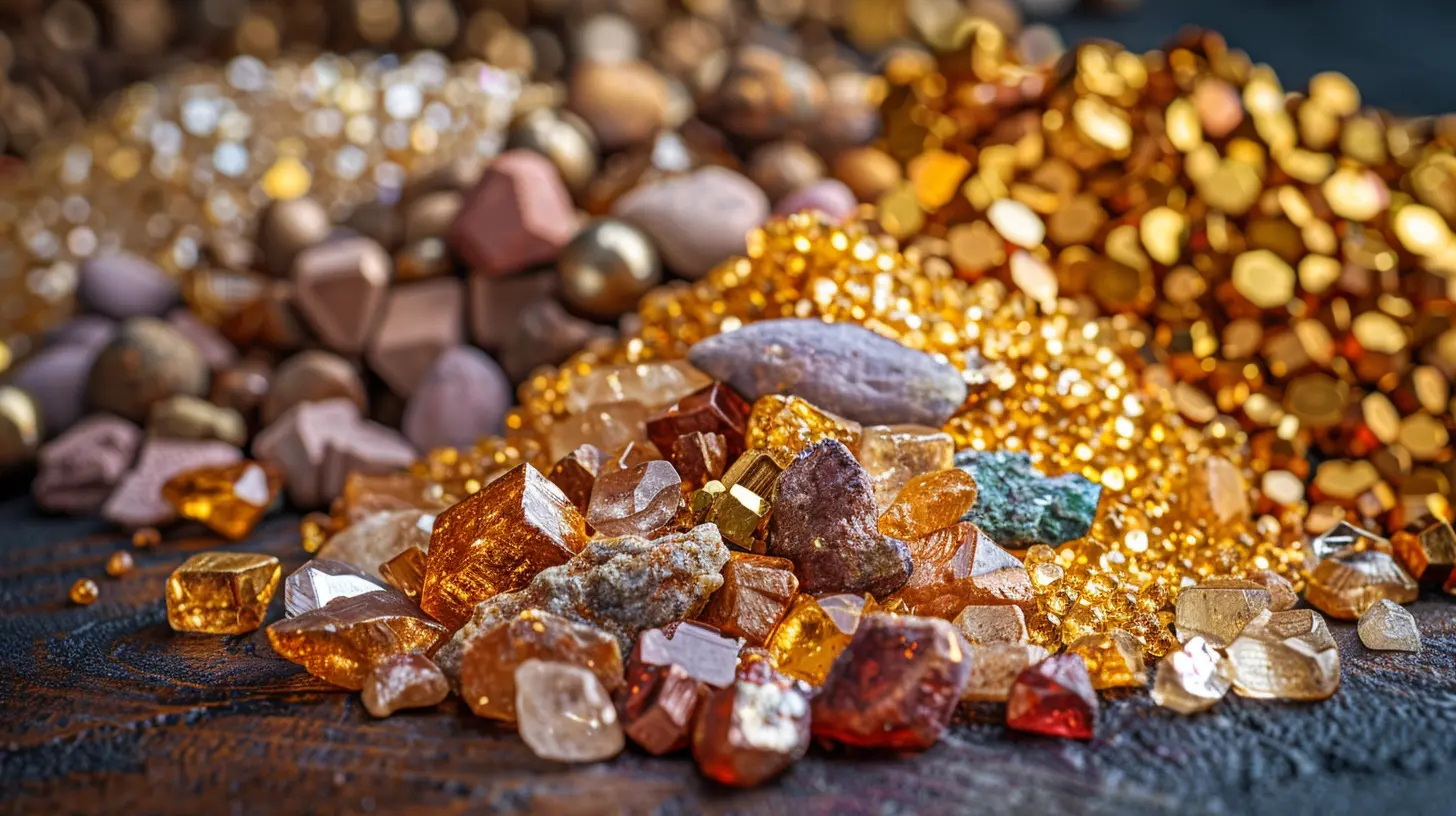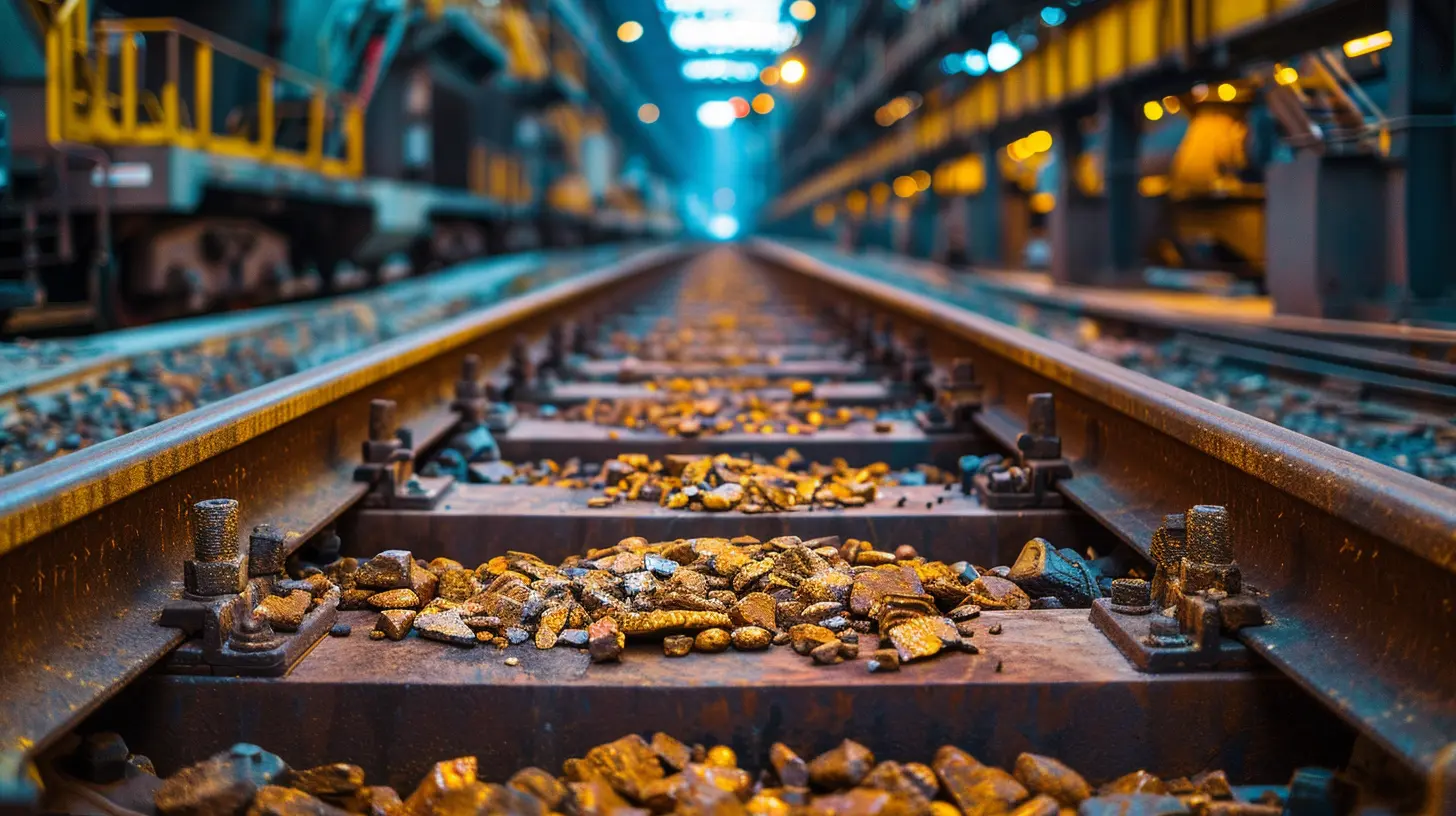The Role of Commodities in a Well-Diversified Portfolio
25 November 2025
Let’s be real—when most people think of investing, their minds jump straight to stocks and bonds, right? Maybe a little real estate if they're feeling adventurous. But commodities? Often overlooked. Yet, these raw, tangible goods—things like gold, oil, natural gas, wheat—can play a serious role in rounding out a solid investment strategy.
In this article, we’re going to cut through the noise, demystify commodities, and talk about exactly why they matter in building a well-diversified portfolio. Not some theoretical blah blah—but real, practical reasons that might just make you reconsider how your portfolio is built.
What Are Commodities, Anyway?
Before we dive in, let’s break it down. What actually counts as a commodity?A commodity is a basic good used in commerce that’s interchangeable with other goods of the same type. Think crude oil, gold, corn, coffee, and even livestock. These aren’t tech stocks or mutual funds—they’re the physical building blocks of economies.
They usually fall into two broad categories:
- Hard commodities: These are natural resources that are mined or extracted—like oil, gold, or natural gas.
- Soft commodities: Think agricultural products—like wheat, coffee, sugar, and livestock.
Now that we’ve got that straight, let’s talk about how they fit into a portfolio.
Why Commodities Deserve a Spot in Your Portfolio
Let’s be honest—commodities haven’t always had the best PR. People think they’re volatile, complicated, maybe even a bit “old school.” But here’s the thing: they can bring some serious benefits to the table.1. Diversification, Baby, Diversification
You’ve heard the saying, “Don’t put all your eggs in one basket.” That’s basically the golden rule of investing. But here’s where people mess up—they diversify across stocks but forget to leave the stock market entirely.Adding commodities gives you true diversification. Why? Because commodities often behave differently than stocks or bonds. When markets crash or inflation kicks in hard, commodities sometimes go in the opposite direction.
For instance, during the 2008 financial crisis, stocks tanked—but gold? It went up. That’s the magic of non-correlation.
2. A Hedge Against Inflation
Ever notice how when prices go up—gas, groceries, basically everything—your dollar suddenly doesn’t stretch as far? That’s inflation biting you in the wallet. And guess what? Commodities love inflation.Since commodities are actual physical goods, their prices often rise with inflation. So while your cash might be losing value sitting in a savings account, your commodity investments could be soaking up those inflationary gains. It’s like putting up an umbrella in a financial storm.
3. Returns Potential
Let’s be clear—commodities are not guaranteed to make you rich overnight. But when timed right and used wisely, they can offer strong returns. The catch? They’re cyclical. That means they go through booms and busts based on supply, demand, and global trends.Think about oil. When global economies are booming, oil demand spikes, and so do prices. Same with metals or agricultural goods. Ride those waves smartly, and commodities can seriously juice up your returns.
Risks? Let’s Keep It Real
Now, it’s not all sunshine and dollar signs. Commodities can be risky. Prices can swing wildly—think weather problems destroying crops, or geopolitical tensions messing up oil supply.Here are a few risks to keep on your radar:
- Volatility: Commodity prices can be ultra-sensitive to news, weather, politics, and global events.
- Lack of income: Unlike stocks (dividends) or bonds (interest), commodities don’t pay you to hold them.
- Complexity: Some commodity investments—like futures—are not beginner-friendly.
But here's the key: you don’t need to go all-in on commodities. Even a small slice of your portfolio can provide those benefits we talked about without exposing you to big risks.
Ways to Invest in Commodities
Alright, so you’re intrigued. But how exactly do you invest in commodities? Turns out, there are a few different paths you can take—some more hands-on than others.1. Direct Investment (Futures Contracts)
This is the purest way to invest—you’re basically betting on the future price of a commodity. But futures are complex and come with high risk. Unless you’re a seasoned trader or love watching charts all day, maybe leave this one for the pros.2. Commodity ETFs and Mutual Funds
This is where things get practical for everyday investors. These funds track commodity prices or invest in futures and related assets. Some examples:- SPDR Gold Shares (GLD)
- United States Oil Fund (USO)
- Invesco DB Agriculture Fund (DBA)
They’re easy to buy and sell through your brokerage account, just like stocks. No silos of wheat required.
3. Commodity Stocks
You can get exposure to commodities by investing in companies that produce or deal in them—like oil companies, mining firms, or agricultural businesses. While not a pure play, it’s a simpler way to ride commodity trends.4. Physical Commodities (Gold Bars, Anyone?)
Yes, some people go old-school and buy the actual stuff—gold coins, silver bullion, even barrels of oil if you’ve got room in the garage (just kidding—please don’t). Holding physical commodities can be a hedge against economic uncertainty, but it’s not for everyone.Commodities vs. Other Asset Classes: How They Stack Up
Let’s compare. Why pick commodities over, say, more stocks or real estate?| Asset Class | Inflation Hedge | Volatility | Income | Diversification |
|----------------|----------------|------------|--------|-----------------|
| Stocks | Medium | Medium | Yes | Limited |
| Bonds | Low | Low | Yes | Limited |
| Real Estate | Medium | Medium | Yes | Moderate |
| Commodities | High | High | No | High |
See the appeal now? Commodities aren’t there to replace your other investments—they complement them. Think of them like the hot sauce in your investment recipe: you don't need a ton, but it adds a kick and brings the other flavors alive.
How Much Commodities Should You Have?
Good question. The answer? It depends.Most financial advisors recommend keeping 5% to 10% of your portfolio in commodities. Anything more than that, and the volatility could start to make your ride a bit bumpier.
If you’re younger and can handle more risk? Maybe lean on the higher end. Nearing retirement? Stay conservative. As always, tailor it to your risk appetite and financial goals.
And don’t forget—periodically rebalance. Commodities can move fast, and you don’t want your portfolio to get lopsided.
Timing the Commodity Market (Spoiler: It’s Tricky)
Here’s the trap a lot of folks fall into—they try to time the market. “Buy oil when it’s low, sell when it’s high.” Easier said than done, right?Here’s the truth: commodity prices are notoriously hard to predict. They depend on factors like:
- Geopolitical events
- Supply chain disruptions
- Currency fluctuations
- Weather patterns
- Government policies
Instead of timing, think long-term strategy. Use commodities as a strategic allocation, not a short-term gamble. If you happen to catch a good run, great. But don’t bet your nest egg on it.
Real-World Examples (When Commodities Saved the Day)
Let’s look at a few times when commodities made investors look good:✅ The 1970s Oil Crisis
Back when inflation was spiraling and markets were tanking, oil prices soared. Smart investors with commodity exposure didn’t just survive—they thrived.✅ The 2008 Crisis
Gold shot up while the stock market crumbled. Investors who held gold had a cushion as others faced steep losses.✅ COVID-19 Pandemic
After the initial shock, commodities like copper and lumber surged as economies reopened and demand shot up. Again—diversified investors came out ahead.Final Thoughts: Is It Time to Add Commodities to Your Portfolio?
Look, commodities aren’t magic. They won’t make you a millionaire overnight. But they do add something special to your portfolio—a layer of protection, a hedge against inflation, and a chance for solid returns in tough times.If you’re serious about building wealth and protecting it against life’s curveballs, commodities deserve a seat at the table. And the best part? You don’t have to go all-in. Just a small allocation can make a big impact.
So go ahead—spice up your portfolio. A little gold here, some oil or agriculture exposure there. Because when the markets get shaky (and they will), you’ll be glad you did.
all images in this post were generated using AI tools
Category:
Portfolio DiversificationAuthor:

Harlan Wallace

